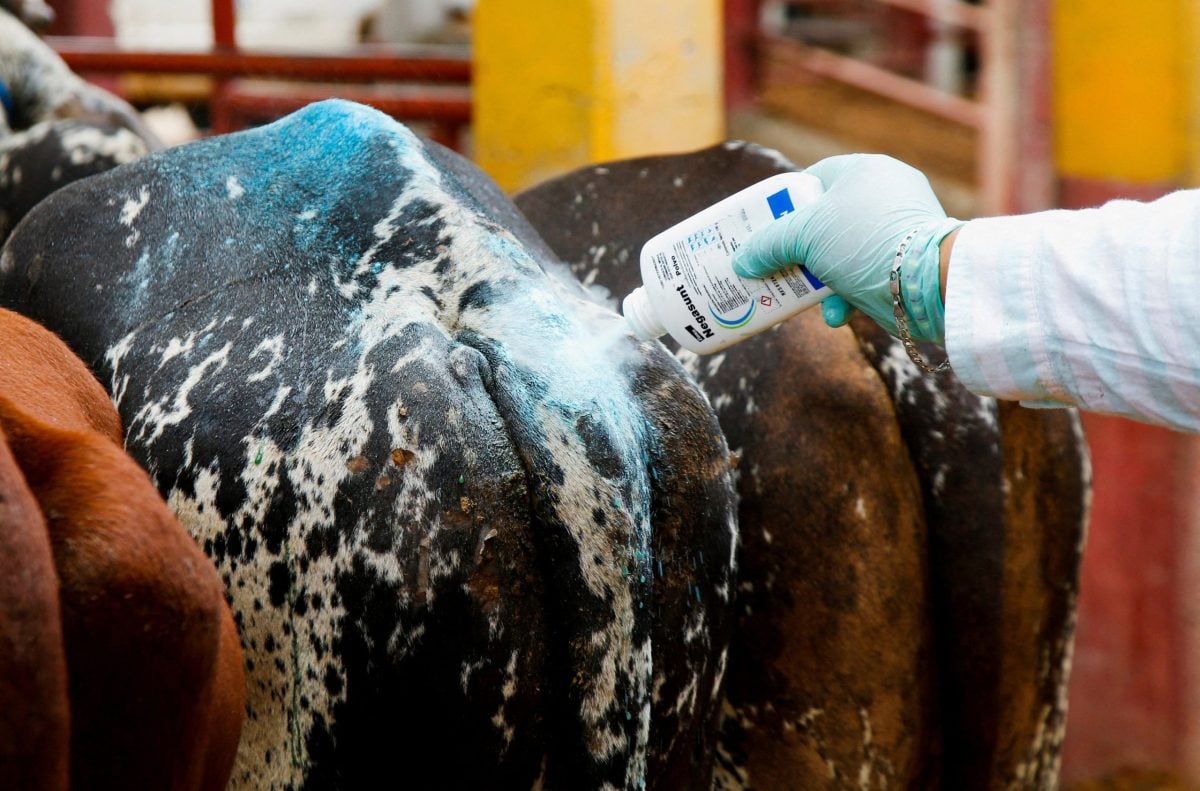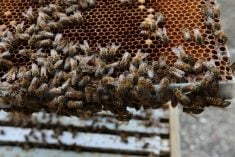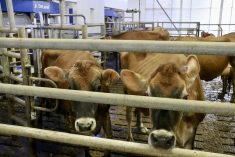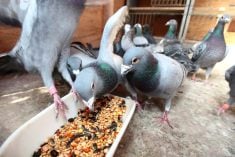Animal welfare research is moving beyond identifying what keeps an animal healthy, to focus more on their state of being and their happiness.
For years, farmers have justified the way they manage and house animals based on objective measures of their health: disease prevalence, growth rates and feed consumption.
Consumer research, however, shows that’s not good enough for them, says Dr. Ed Pajor, Anderson-Chisholm Chair in Animal Care and Welfare and professor of animal welfare at the University of Calgary.
Pajor was the keynote speaker at the recent annual Campbell Centre for Animal Welfare research symposium at the University of Guelph.
There has been a lot of work on figuring out what consumers think of animal agriculture and there’s no doubt that it’s changed.
Pajor shared Dr. Jeff Spooner’s research at the University of Calgary from 2014. It showed consumers have a strong preference for a natural environment for animals, concerns about pain in production systems and an opposition to the singular focus on animal health at the expense the animals living a “natural” life.
He told any veterinary students in the audience to keep that in mind.
Read Also

Mexico agriculture secretary says still no date for restarting cattle exports to U.S.
Mexican Agriculture Minister Julio Berdegue said on Wednesday that Mexico and the United States have not yet set a date to resume Mexican cattle exports amid an outbreak of the flesh-eating screwworm parasite.
“Consumers are concerned about pain and suffering. They don’t understand housing systems, but pain and suffering they get,” he said.
Farmers, on the other hand have a different opinion. They recognize and acknowledge that some of their practices might cause pain, but they have regulatory or marketing reasons for them.
Take branding, for example. Beef farmers know it causes some pain, but in some areas they are required to do it for identification purposes.
Few beef farmers have traditionally used pain mitigation for castration or hot branding, but Pajor said products have gotten cheaper and easier to give to animals and more farmers are using them. Researchers recently had a challenge finding beef farmers who did not use pain mitigation for a study.
How has the livestock sector responded to changing consumer questions about what they do?
“There are a whole range of standards,” said Pajor, such as the Canadian Feedlot Animal Care Assessment Program and the dairy proAction program.
However, the growth of broader sustainability programs, he said, could have a greater influence. These are programs created and driven by multiple buyers in the supply chain. They include the Global Roundtable for Sustainable Beef, the Sustainability Consortium and the Sustainable Agriculture Initiative Platform.
Unilever, one of the world’s largest food manufacturers, has its own sustainable agriculture code.
“They expect the supply chain to make producers accountable for animal welfare,” said Pajor.
Consumer trends on animal welfare are also influencing how researchers look at animal welfare.
“Animal welfare has expanded to include a broad range of scientific disciplines,” he saiod. Researchers in immunology, social science, economics and genomics may all now be involved in animal welfare research.
“The emphasis will be on emotional states of animals, positive states. Surely we can do more than just alleviate suffering.”
In that vein, animal welfare research has moved from maintaining health, to managing pain, a barrier to the animal’s happiness. The challenge is how to measure and analyze different emotional states.
One of the popular areas of research in animal welfare is “grimace scales” — numerous pictures of the face of animals, enabling researchers to determine comfort or pain.
Pajor called them the “hot, new thing. It is a good tool. It’s a start, but there are a lot of challenges and it’s not quite that simple.”
The drivers of change will continue to increase, he said, and that will mean opportunities for researchers who are able to see them.
“Never forget that animal welfare is about the animal and understanding the animal. We need to do that, but we need different approaches to it.”
— John Greig is a field editor for Glacier FarmMedia based at Ailsa Craig, Ont. Follow him at @jgreig on Twitter.













